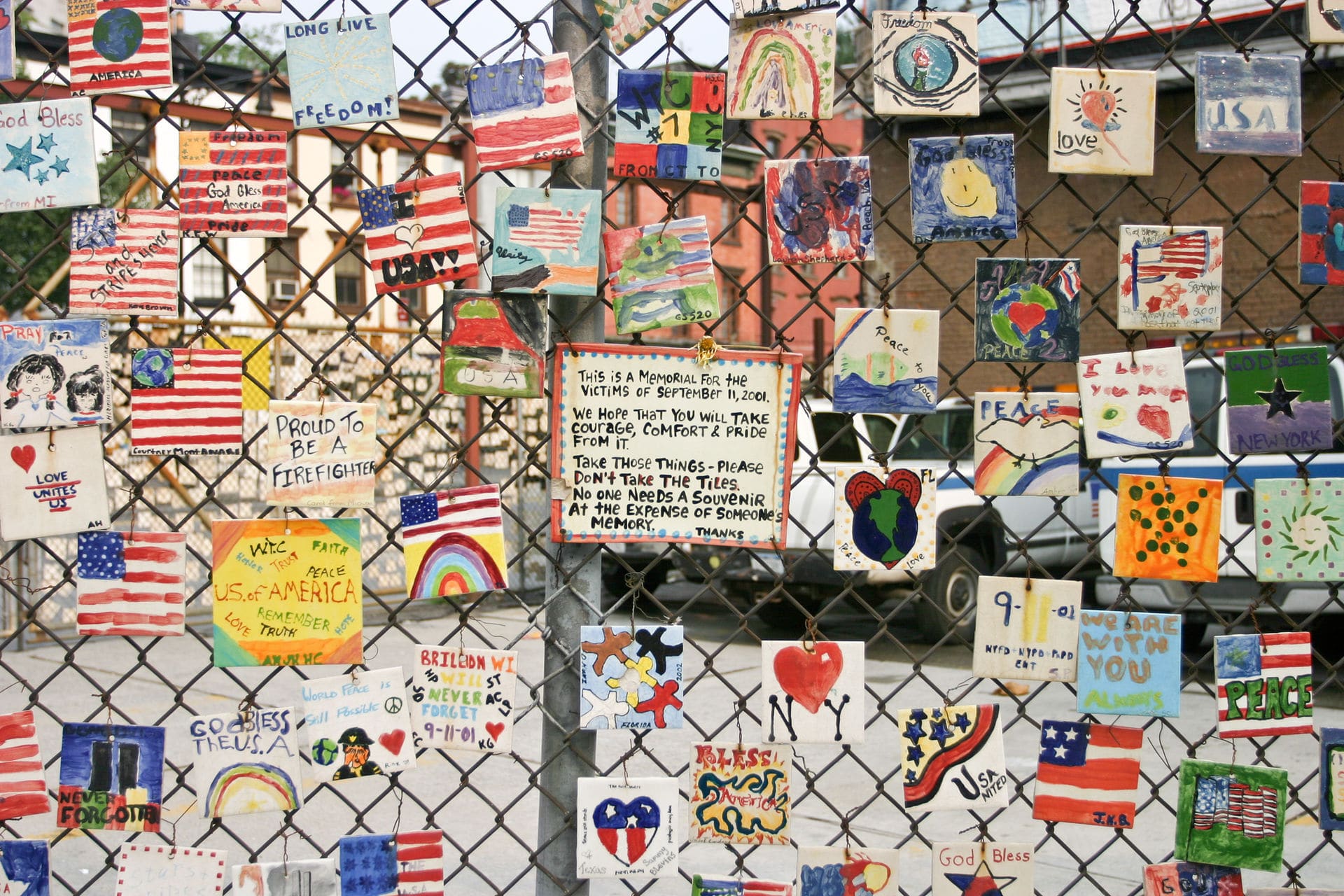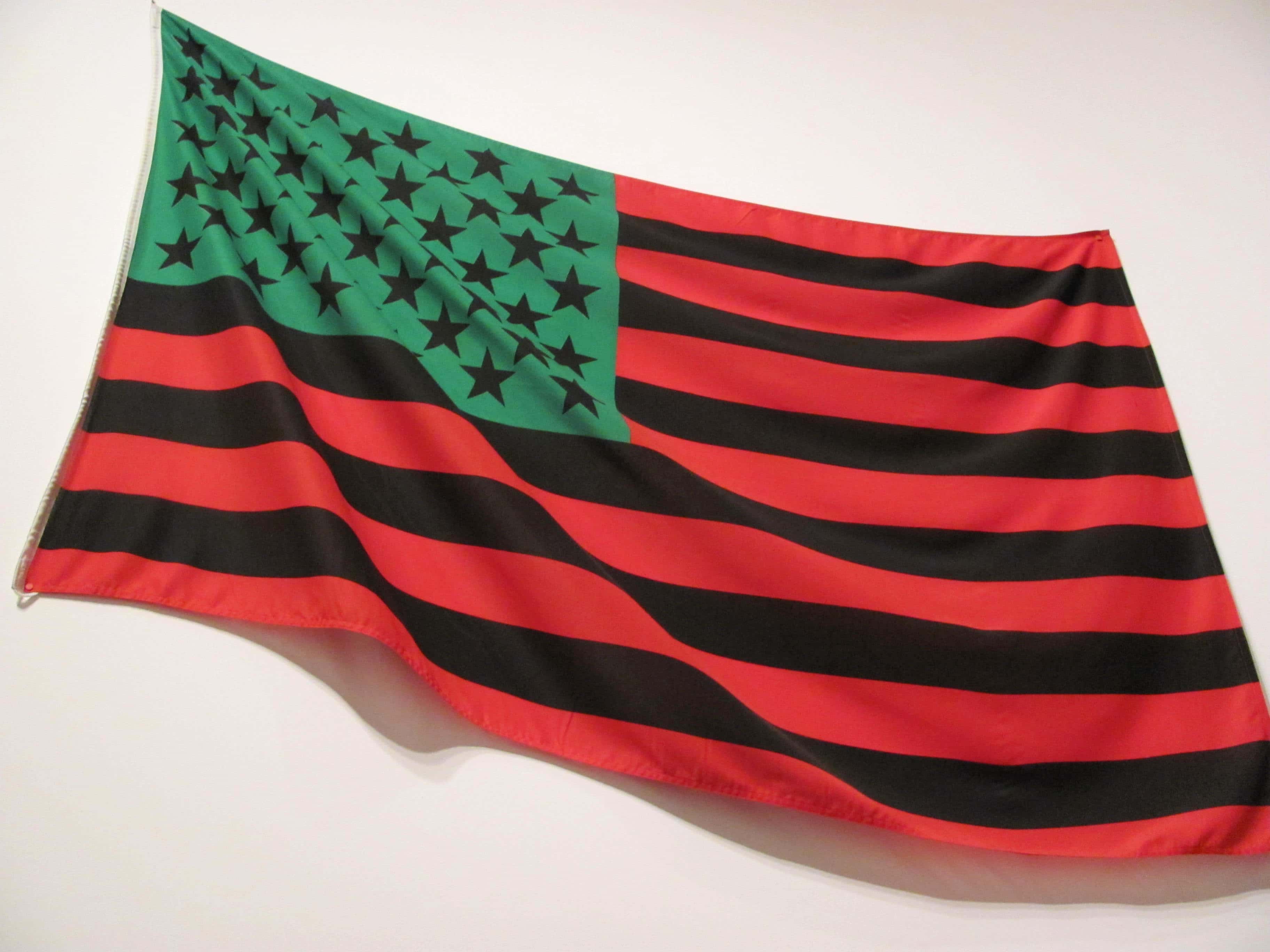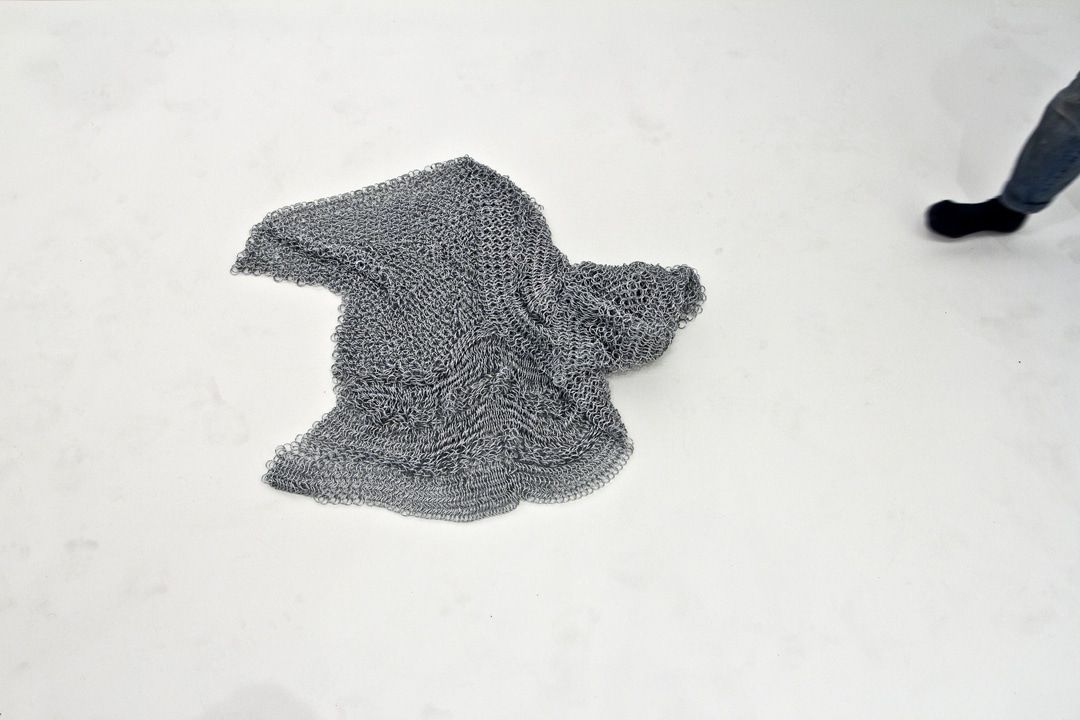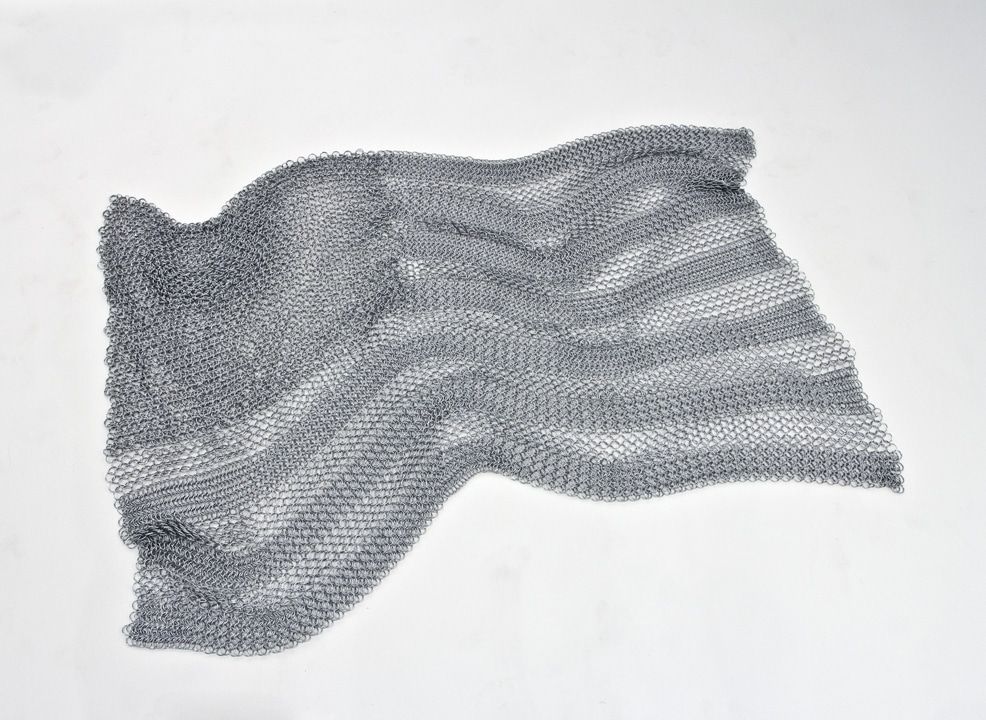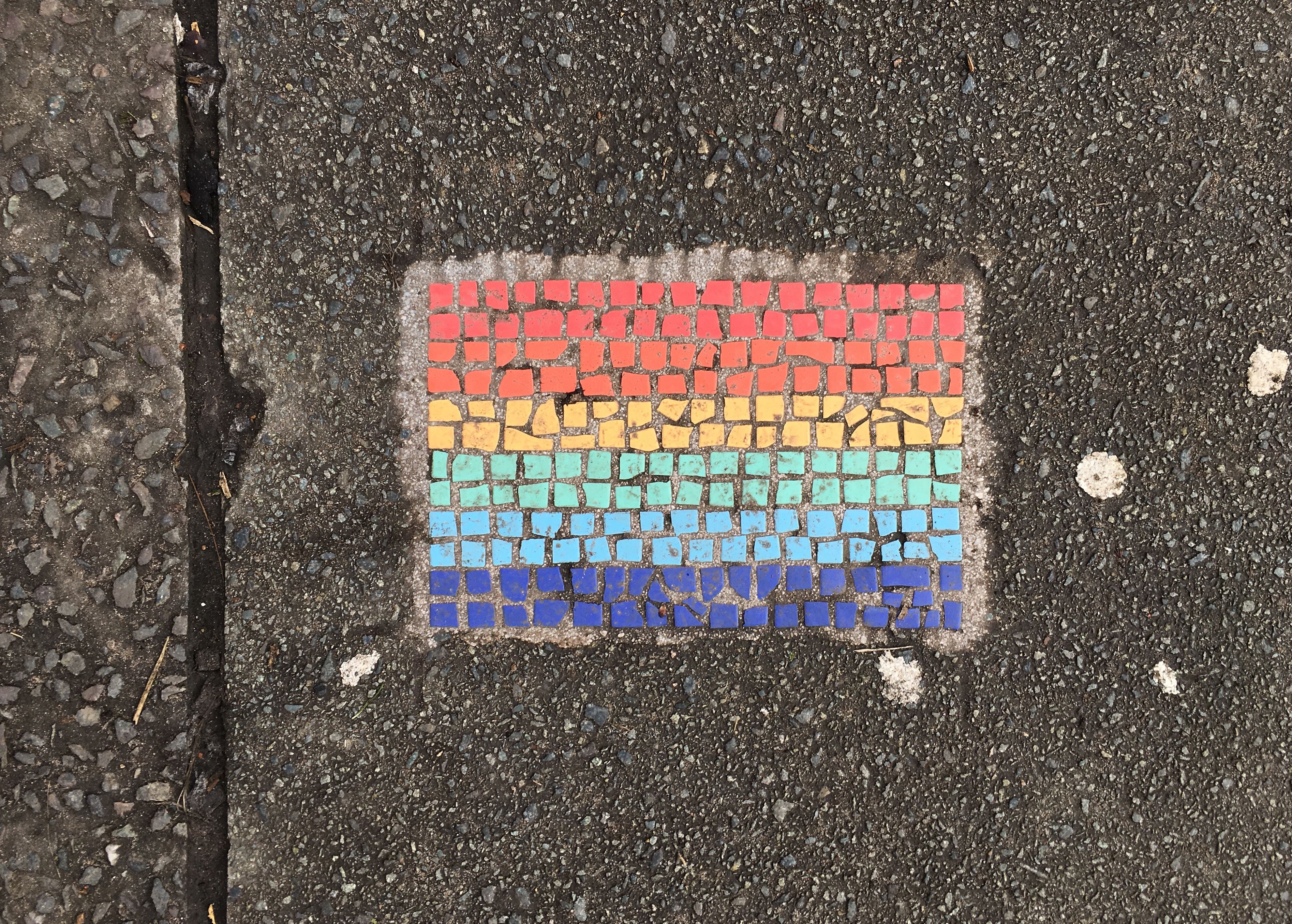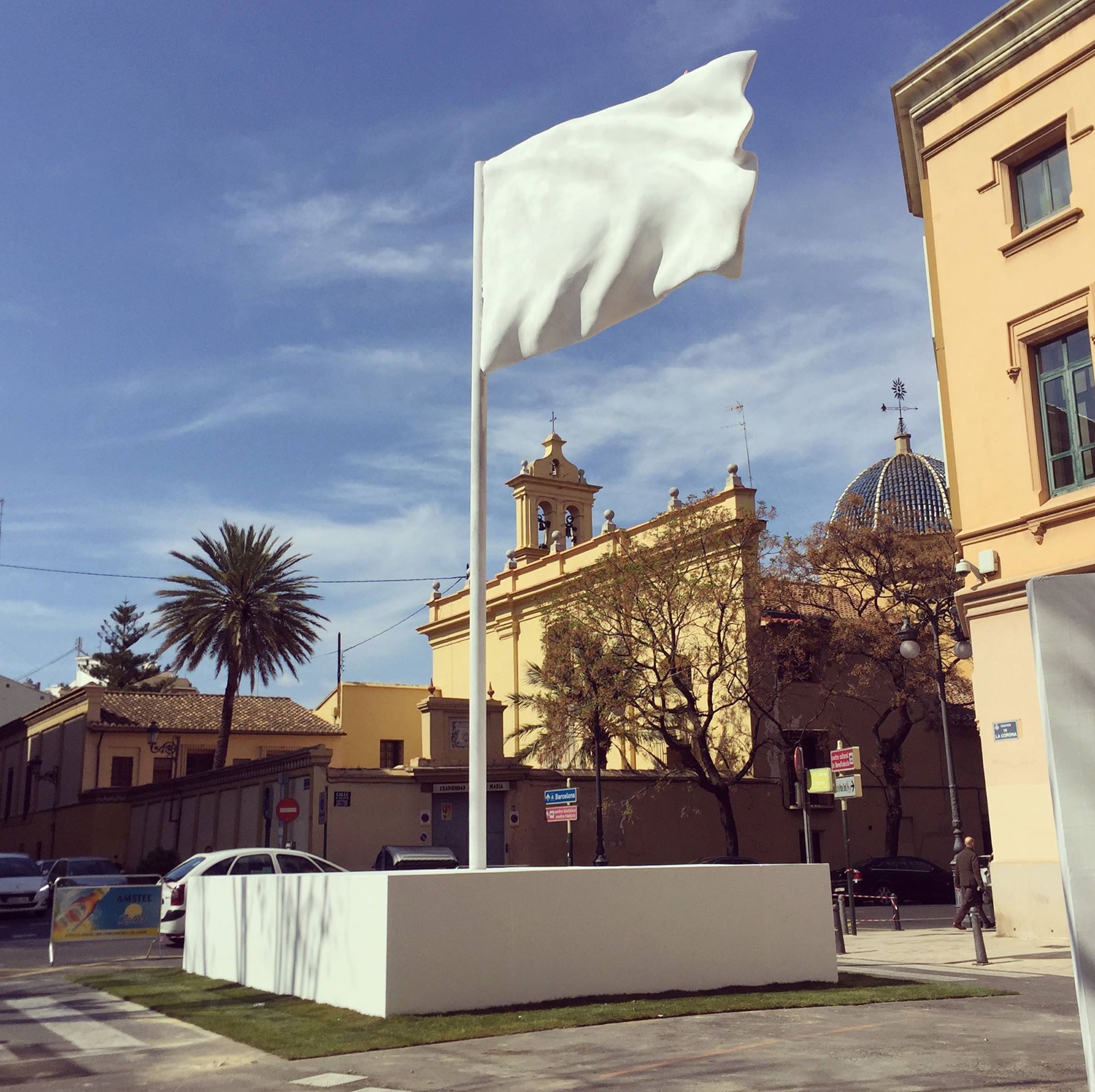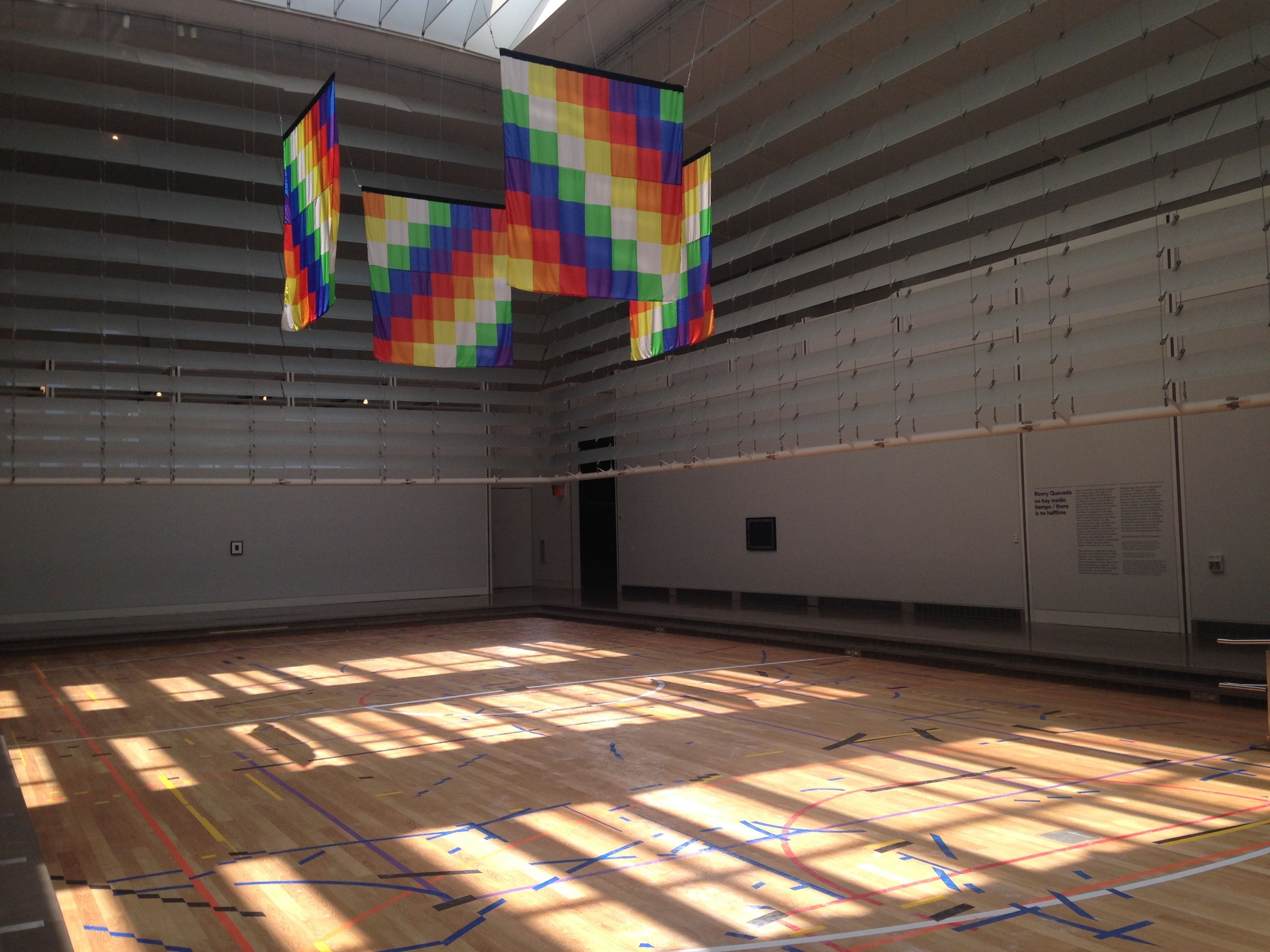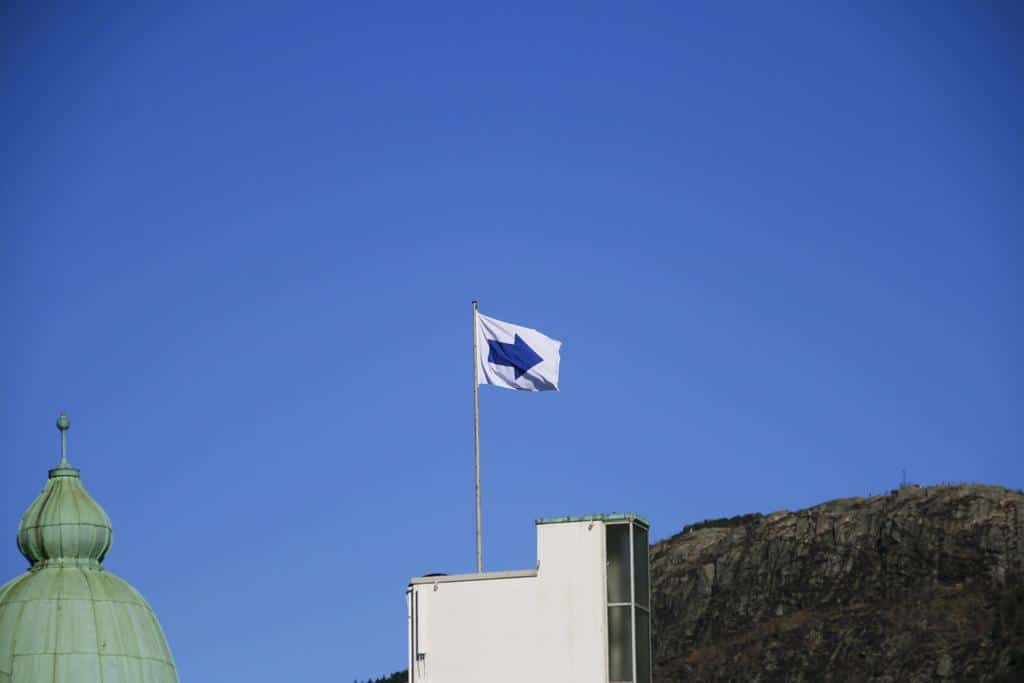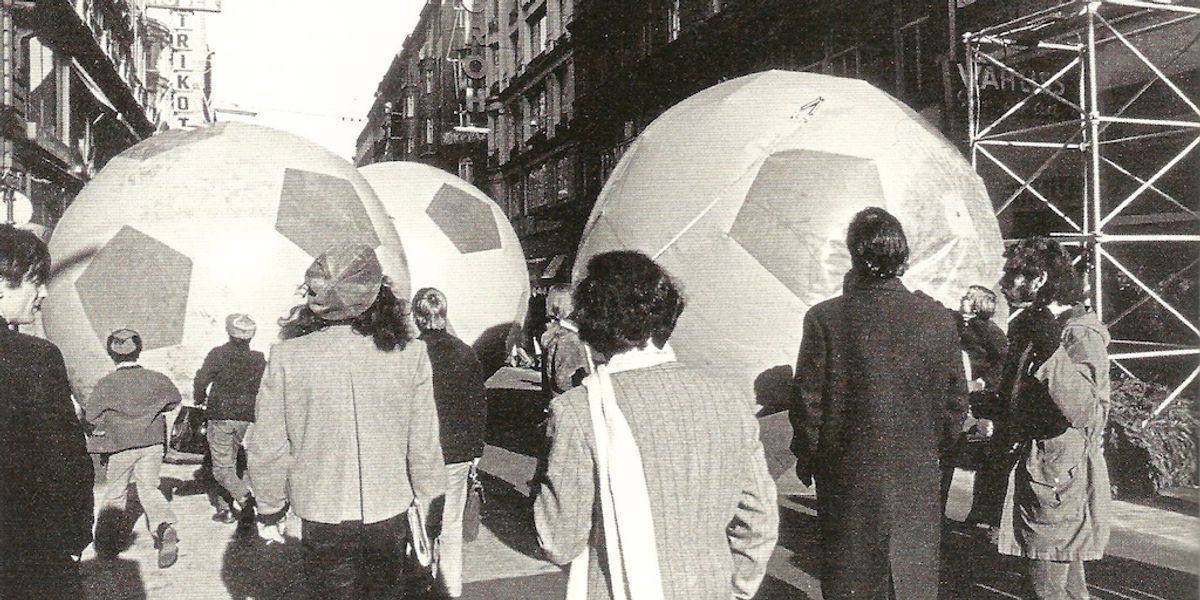Flags are routinely associated with crass forms of nationalism. In Europe, national flags are sometimes associated with far-right parties and football hooliganism. In Germany, until very recently, displaying the black, red, and gold on one’s house was understood to be a clear endorsement of a certain kind of revanchist politics. While the flag is a symbolic distillation of political and ideological sentiment into a graphic form, it is very much a medium, and not a message. Flags don’t convey one elemental ideology but are freighted with myriad, disparate identities. This dissonance has been appealing to artists throughout time.
In recent years, campaigns have been launched to both rework flags or, more radically, eliminate them, including Rem Koolhaas’s polemical pan-European symbol. Debuted in 2001, the design humorously fuses the stripes of the EU member state flags into a multicolored barcode; a snide comment on the evolution of national identity into rootless global consumer culture. In the thin ribbons of color one nearly loses the individuality of each flag, the red and white of Denmark and Austria are barely distinguishable, and that’s the point: flags, in 2001, were a thing of the past, destined for history’s ash heap. But in the intervening years we have seen a flag-waving resurgence: from the post-9/11 plastering of the American flag across nearly every available surface, to the resurgent flags of Euro Nationalist movements, and the crude typography of the ISIL banner. To see flags as simply relics of the past is to ignore their emotional pull, whether it be national, ethnic, or regional, they still have affective power over the vast majority of us. Artists are keenly aware of this, and the flag has been, and continues to be, a thematic touchstone. The form is a shorthand for issues of identity and belonging.


